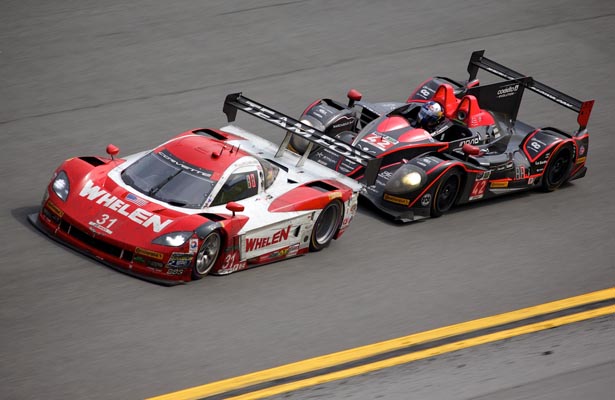While the inaugural round of the TUDOR United SportsCar Championship may now be in the books, the job of Scot Elkins and the rest of IMSA’s technical team has just begun, as a new set of Balance of Performance (BoP) regulations will be defined for the Prototype class prior to next month’s Twelve Hours of Sebring.
Speaking with Sportscar365, Elkins confirmed changes will be made to the DP and P2-based machinery as they transition into high-downforce aero packages for Sebring and the majority of the remaining rounds this season.
DPs, which ran in a hybrid 2014-spec at Daytona, are expected to use diffusers, and although not yet confirmed by IMSA, P2 cars could shed its Le Mans-spec low-downforce aero kit.
Other changes, such as air restrictor sizes, are expected, along with the possibility of adjusting fuel capacities for the two different platforms after data gathered from the Rolex 24.
“We’re going to desperately try to get something out prior to the [Sebring] test so everyone’s there would be testing what they’re going to race,” Elkins told Sportscar365. “In an ideal world, we’ll be able to set the BoP before the test and keep it through the race.”
Despite a reduction in power given to DP cars just prior to Daytona, the tube-framed prototypes were still noticeably quicker than the ACO-spec machinery in the race. Elkins said they will be taking a number of DPs to the wind tunnel this month to perform BoP aero testing for Sebring.
As for the other classes, Elkins doesn’t anticipate a complete overhaul in the BoP but rather adjustments to specific cars based on the data gathered in the twice-around-the-clock endurance classic.
“GT Daytona and GT Le Mans is a little different because we didn’t have any specific low-downforce packages on those cars,” he said. “We’ll look at it, but it’s not defining a new aero package like we’ll do for the Prototype class.”
As referenced above, Elkins hopes to have the BoP adjustments released prior to the official Sebring Winter Test on Feb. 20-21.







